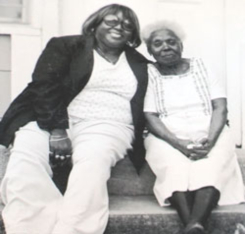Hospice for End-Stage Lung Cancer
If you are reading this, it is likely that you or your loved one are living with the emotional and physical difficulties associated with terminal lung cancer. As patients approach the final stages of lung cancer, the search for care that addresses their taxing symptoms and prioritizes comfort becomes paramount.
Reaching the decision to transition from curative care to focusing on the symptom management that only interdisciplinary hospice care can provide calls for well-informed consideration.
What Are the Symptoms of End-Stage Lung Cancer?
An informed decision on when a patient is ready for hospice care begins with an understanding of end-stage lung cancer symptoms. These symptoms include:
- Shortness of breath
- Pain
- Cough
- Trouble focusing
- Confusion
- Extreme weakness and tiredness
- Little interest in eating or drinking
- Restlessness
- A rattle in the throat or upper part of the chest when breathing
- Fast breathing or pauses in between breaths
In addition to these symptoms, patients may also exhibit one or more of the Clinical Signs of Death. For additional information on determining when a cancer patient is reaching the final stages of their disease progression and is ready for hospice, read our Hospice Eligibility Guidelines for End-Stage Cancer Patients.
Hospice provides control over care at the end of life. Start the discussion today.
How Does Hospice Support Patients With End-Stage Lung Cancer?
The last stages of lung cancer can be challenging for patients, but there is hope. This is the point where a hospice interdisciplinary care team steps in to provide much-needed physical, spiritual, and psychosocial support for patients and families.
Hospice offers the following services for patients facing end-stage lung cancer:
- Coordinated care at every level—A plan of care is developed with the advice and consent of the patient’s oncologist or other physicians. At weekly meetings, the team reviews the patient’s physical, mental, and spiritual condition as well as any needs or concerns the family may have. In addition, hospice coordinates and supplies all medications, medical supplies, and equipment related to the diagnosis to ensure patients have everything they need.
- Pain management and symptom control—Hospice specializes in managing patients' pain and controlling their symptoms, so that they are able to enjoy life and remain in control of day-to-day decisions as much as possible. If symptoms become severe, a level of care called continuous care brings shifts of acute symptom management to the patient’s bedside for up to 24 hours/day per Medicare guidelines.
- Emotional and spiritual assistance—A terminal lung cancer diagnosis can bring strong feelings to the surface or spiritual questions may arise. Hospice has the resources to help patients maintain their emotional and spiritual well-being.
- Services provided wherever a patient calls home—VITAS offers care for patients wherever they live—in their homes, long-term care facilities, or assisted living communities. If symptoms become too difficult to manage at home, inpatient hospice care services can provide around-the-clock care until the patient is able to return home.
How Does Hospice Support Families of Patients with End-Stage Lung Cancer?
The emotional and physical strain that can often come as a result of caring for a loved one facing the final stages of lung cancer can leave a lasting impact on those closest to them. There are many difficult healthcare and financial decisions that come with being a caregiver. These decisions, coupled with the realization that it is time to transition the focus of medical care, can be overwhelming.
Hospice can provide relief to caregivers through support in several ways:
- Caregiver education and training—The family caregiver is vital in helping the hospice team care for the patient. Hospice can relieve families’ concerns by educating them on what to expect and how to take care of their loved one as symptoms arise and communication becomes difficult.
- Help with difficult decisions—The hospice team helps families process challenging decisions that impact the patient’s condition and quality of life.
- Emotional and spiritual support—Caregivers keep their emotions intact, but they need an outlet to express their feelings. Hospice care supports those who care for the patient, bringing outside resources, a listening ear, or a shoulder to cry on.
- Financial assistance—Although hospice services are covered by Medicare, Medicaid/Medi-Cal, and private insurers, families may have financial concerns as a result of an extensive illness. Social workers can assist families with financial planning and finding financial assistance during hospice care. After a death, they can help grieving families find financial assistance through human services, if needed.
- Respite care—Caring for a loved one with an end-stage illness can cause tremendous stress. Hospice offers up to five days of inpatient care for the patient when the caregiver needs to be away.
- Bereavement services—The hospice team works with surviving loved ones for up to 13 months after a death to help them express and cope with grief in their own way, facilitating healthy bereavement.
How Long Does the Final Stage of Lung Cancer Last?
Analyzing the prognosis of someone reaching the final stages of lung cancer comes with an understanding that these determinations can be subject to change. It is key to keep in mind that patients can live weeks, months, or even years after being diagnosed. According to the American Cancer Society, when patients reach stage 4 lung cancer, they are about 6 percent as likely to live for 5 years as someone who doesn’t have this cancer.1
Providing patients with comfort during this important period in their life can mean all the difference. It can give patients an opportunity to live out their final days with dignity, in the presence of those who care about them most, and in the location that they prefer.
1Lung cancer survival rates. 5-Year Survival Rates for Lung Cancer. (n.d.). Retrieved March 6, 2023, from https://www.cancer.org/cancer/lung-cancer/detection-diagnosis-staging/survival-rates.html
